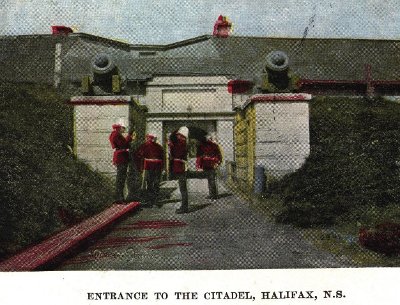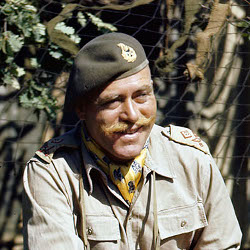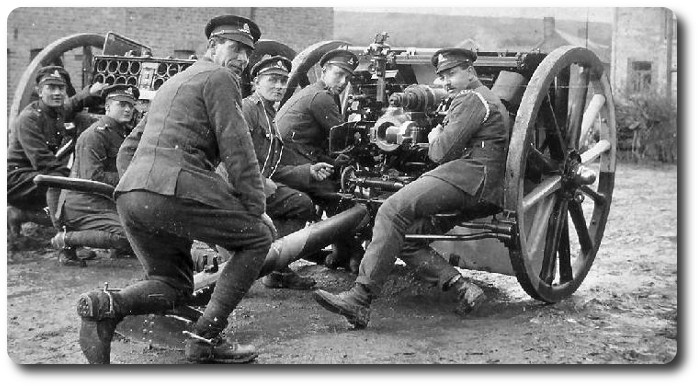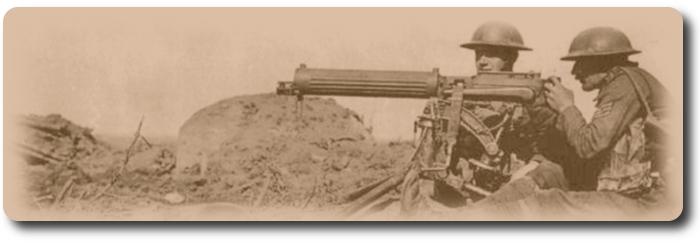"D" Company, Infantry School Corps

Our Permanent Troops
"D" Company, Infantry School Corps, London, Ont.
The Dominion Illustrated, 28th February, 1891
 This Company was the last formed of the corps, or regiment, known as the Infantry School Corps; therefore, all the history related of the other companies belongs to it also, more especially as all its present combatant officers, with one exception have served with the other companies.
This Company was the last formed of the corps, or regiment, known as the Infantry School Corps; therefore, all the history related of the other companies belongs to it also, more especially as all its present combatant officers, with one exception have served with the other companies.
In the 1st of July, 1886, Sir Adolphe P. Caron laid the foundation stone of the Infantry baracks at London, Ontario. The building is of white brick, with red stone facings. The site is on the ground purchased by the City from the Hon. John Carling, and is sutuated north-east of the town, about two miles from the post office.
A great deal of time and money was lost by the discovery that the sub-soil was of shifting sand, and the boiler house, which was built for heating the buildings throughout, was sunk 30 feet before anything like a solid foundation was found.
The exterior of the barracks, as will be seen from the illustrations, has not a very military appearance, nor are the internal arrangements as appropriate as might have been expected when new barracks were being built.
On the 19th of July, 1887, Major Smith, commanding "C" Company at Toronto, was detached from "C" Company, and was appointed Commandant of the Royal School of Infantry at London, with the rank of Lieut.-Colonel in the Infantry School Corps. It was not, however, until the 24th December of that year that recruiting commenced, owing to the delay in completing the barracks; but from this date till the 5th April, 1888. Lieut.-Colonel Smith was alone with no officer to assist him; and no one who has not had the experience of starting a new regular corps in a new barrack, can have any idea of the amount of work he had to do; luckily, he had as Sergt.-Major, Sergt.-Major Munro, late of "C" Company. On the 5th April, Lieut. Wadmore, also of "C" Company, was sent up to assist him. These two officers, who had been together since the inception of the corps in 1883, carried on all company and school work till the end of June, when Lieuts. Denison and Evans were gazetted to the corps and posted to "D" Company, which had not yet, however, a captain. In August, 1888, Capt. Frere, a captain in the army, but not in the Corps, and Adjutant of "B" Company, was sent up to command it, which he did until the 21st December, 1888, when he left to rejoin his regiment, "The South Staffordshire," much to the regret of the officers, N.C. officers and men, to whom he had much enared himself by his generous heart and kindly manner.
It was not until Match, 1889, that the captain of "D" Company was gazetted, when Lieut. D.D. Young, adjutant of "A" Company, and senior subaltern of the regiment obtained his promotion.
The surgeon was appointed in September, 1888, namely, Surgeon Hanavan, formerly of the 28th., Stratford—Surgeon Fraser, of the 7th Batt., having in the meantime looked after the medical examination of recruits and attended the hospital, which is at present a portion of the barracks used for that purpose; a proper detached hospital, drill shed, married quarters and stables being needed to make them complete.
On the 12th April, 1889, Lieut. and Captain Cartwright was transferred from "C" Company to "D"; and Lieut. Evans sent from "D" to "C" Company in his place. The officers, at the present date, with "D" Company are as follows:—
- Lieut.-Col. Smith, Commandant.
- Captain D.D. Young.
- Lieut. and Capt. R.L. Wadmore.
- Lieut. and Capt. R. Catwright.
- Lieut. S.A. Denison.
- Surgeon M.J. Hanavan.
Lieut.-Col. Smith is also D.A.G., or officer commanding Military District No. 1.
The various illustrations speak for themselves. The physical training is done entirely to music, no single word of command being used when the men are fully trained. The fire picquet and the men in barracks turned out as if for a fire; the men drill at the reels as if they were field guns. On one occasion this picquet, without previous warning, turned out and had water playing on the building in 45 seconds from the first sound of the bugle.
The rifle team are the picked men of the best shooting company of the whole permanent corps. The cup shown is one given by the Hon. J. Carling, to be shot for by the Royal School of Infantry at London and the 7th Batt., and is to be kept by the team winning it three times running. The 7th Batt. won it in 1889, the R.S.I. in 1890.
It would be well, before completing this short account, to pint out the common mistake that is made with regard to our permanent infantry. It is the practice to call them "A," "B," "C" and "D" Schools, when in reality and according to the official militia list, they are "A," "B," "C" and "D" Companies of the Regiment called the Infantry School Corps. This error has no doubt arisen from the fact that each of the companies at present forms school of instruction for the training of officers, N.C. officers and men of the militia, who during their course are attached to these companies respectively. It is curious to observe that the public have never fallen into the same error with the permanent artillery, the units of which are always designated "A," "B" and "C" Batteries, and not "A," "B" and "C" Schools.

Posted by regimentalrogue
at 12:01 AM EDT

 Infantry Training (4 - Company Organization), London, 1914
Infantry Training (4 - Company Organization), London, 1914





 A militia order issues yesterday states that barrack accommodations being now available at Halifax, the following troops will proceed there on or about the fourth of December:
A militia order issues yesterday states that barrack accommodations being now available at Halifax, the following troops will proceed there on or about the fourth of December:




 This Company was the last formed of the corps, or regiment, known as the Infantry School Corps; therefore, all the history related of the other companies belongs to it also, more especially as all its present combatant officers, with one exception have served with the other companies.
This Company was the last formed of the corps, or regiment, known as the Infantry School Corps; therefore, all the history related of the other companies belongs to it also, more especially as all its present combatant officers, with one exception have served with the other companies.



 And it came to pass that upon a much later date this same General Officer Commanding a Division said unto his A.A., and Q.M.G.: "Oh, A.A. and Q.M.G. render unto me by the first day of next month a Return showing the names of the number of men of this Division who have done deeds such as are worthy of reward in the form of the Medal Military, in order that I may send forward this return unto Corps., in accordance with C.R.O. 869."
And it came to pass that upon a much later date this same General Officer Commanding a Division said unto his A.A., and Q.M.G.: "Oh, A.A. and Q.M.G. render unto me by the first day of next month a Return showing the names of the number of men of this Division who have done deeds such as are worthy of reward in the form of the Medal Military, in order that I may send forward this return unto Corps., in accordance with C.R.O. 869."

 The following are the impressions of a Canadian artillery officer with respect to the new camp grounds at
The following are the impressions of a Canadian artillery officer with respect to the new camp grounds at 

 Out into the dark night the Shropshires sent a heavy picket with instructions to the men to be very careful to challenge every person who might come in or out of camp. At the foot of a kopje one of the men of the Shropshires stood on sentry, another private of the same regiment was returning to camp. The sentry promptly challenged, "Halt! who comes there?" and failing to call "Friend," the returning soldier said, "Oh, to you know me." These were fatal words, for no sooner had they been spoken when three ringing shots sounded through the Orange River garrison, three steady shots from the sentry's rifle, and his companion-in-arms fell, never to rise to life again. It was an unfortunate occurrence which cast gloom over the whole camp, but it shows that the rigidity of military discipline should not be trifled with.
Out into the dark night the Shropshires sent a heavy picket with instructions to the men to be very careful to challenge every person who might come in or out of camp. At the foot of a kopje one of the men of the Shropshires stood on sentry, another private of the same regiment was returning to camp. The sentry promptly challenged, "Halt! who comes there?" and failing to call "Friend," the returning soldier said, "Oh, to you know me." These were fatal words, for no sooner had they been spoken when three ringing shots sounded through the Orange River garrison, three steady shots from the sentry's rifle, and his companion-in-arms fell, never to rise to life again. It was an unfortunate occurrence which cast gloom over the whole camp, but it shows that the rigidity of military discipline should not be trifled with.
 1. In a "message from the G.O.C." in the army newspaper Red Patch, Major-Gen. Christopher Vokes of Ottawa told the men of his Canadian division that "to command-incomparable fighting men such as yourselves is an honour which does not sit lightly on my shoulders."
1. In a "message from the G.O.C." in the army newspaper Red Patch, Major-Gen. Christopher Vokes of Ottawa told the men of his Canadian division that "to command-incomparable fighting men such as yourselves is an honour which does not sit lightly on my shoulders."
 Sir.—I read with much interest a letter signed "Ex-Cadet" in The Mail a couple of weeks since. The writer complained of the high-handed way in which military matters had been conducted at the
Sir.—I read with much interest a letter signed "Ex-Cadet" in The Mail a couple of weeks since. The writer complained of the high-handed way in which military matters had been conducted at the 
 Reference Officer Retention. Instead of looking for outside influences, the Army needs to look inward. Good units with good leaders retain more soldiers. The same is true for the officer corps. When junior officers have strong, positive leadership, they are more inclined to stay in the Army. When presented with bad leadership, they want out. Talking with peers, most notably in the past 6 months, there seems to be an alarming number of bad leaders out there. Leaders who sugar coat things to higher; leaders who lie; leaders who are immoral; leaders who won't think twice about killing a career over an honest mistake or a difference of opinion; leaders who lead by fear and intimidation; leaders who care more about themselves than their soldiers/officers; leaders who look away at transgressions of others "for the good of the Army". Who wants to work under conditions where they are exposed to bad leadership? Who wants to be in an Army where the people who succeed do not fit the mold of the person you want to be? Who wants to be in a unit where the leadership would not think twice about overworking you or exposing you to unnecessary hardship and/or risk? Who wants to serve in an organization where they are disgraced by the acts of a few? While I can't voice the percentage of bad leaders, what number of examples would indicate that there are too many? I would argue that in the profession of arms, one would be too many. If in an officer's first couple of years in the Army he exposed to bad leaders without any examples/exposure to good leaders, you can bet he will leave. If exposed to an even mix of good and bad, the severity of each and/or the sequence relative to the time of the decision to stay in the army is made, will effect the decision. If exposed to only good leaders, there will still be some who elect to leave the service but at a much lower rate.
Reference Officer Retention. Instead of looking for outside influences, the Army needs to look inward. Good units with good leaders retain more soldiers. The same is true for the officer corps. When junior officers have strong, positive leadership, they are more inclined to stay in the Army. When presented with bad leadership, they want out. Talking with peers, most notably in the past 6 months, there seems to be an alarming number of bad leaders out there. Leaders who sugar coat things to higher; leaders who lie; leaders who are immoral; leaders who won't think twice about killing a career over an honest mistake or a difference of opinion; leaders who lead by fear and intimidation; leaders who care more about themselves than their soldiers/officers; leaders who look away at transgressions of others "for the good of the Army". Who wants to work under conditions where they are exposed to bad leadership? Who wants to be in an Army where the people who succeed do not fit the mold of the person you want to be? Who wants to be in a unit where the leadership would not think twice about overworking you or exposing you to unnecessary hardship and/or risk? Who wants to serve in an organization where they are disgraced by the acts of a few? While I can't voice the percentage of bad leaders, what number of examples would indicate that there are too many? I would argue that in the profession of arms, one would be too many. If in an officer's first couple of years in the Army he exposed to bad leaders without any examples/exposure to good leaders, you can bet he will leave. If exposed to an even mix of good and bad, the severity of each and/or the sequence relative to the time of the decision to stay in the army is made, will effect the decision. If exposed to only good leaders, there will still be some who elect to leave the service but at a much lower rate.






 The 60-pr. B.L. and 4.7-in. Q.F. are examples of heavy artillery guns. Their range is longer than that of field artillery, and their shrapnel bullets are heavier; their searching power is, however, little greater, and their shells are equally liable to be deflected by a very slight bank of earth,
The 60-pr. B.L. and 4.7-in. Q.F. are examples of heavy artillery guns. Their range is longer than that of field artillery, and their shrapnel bullets are heavier; their searching power is, however, little greater, and their shells are equally liable to be deflected by a very slight bank of earth,
 Basic School was a school in fact as well as in name, a halfway house between the campus and the real
Basic School was a school in fact as well as in name, a halfway house between the campus and the real 

 On March 13, 1918,
On March 13, 1918, 